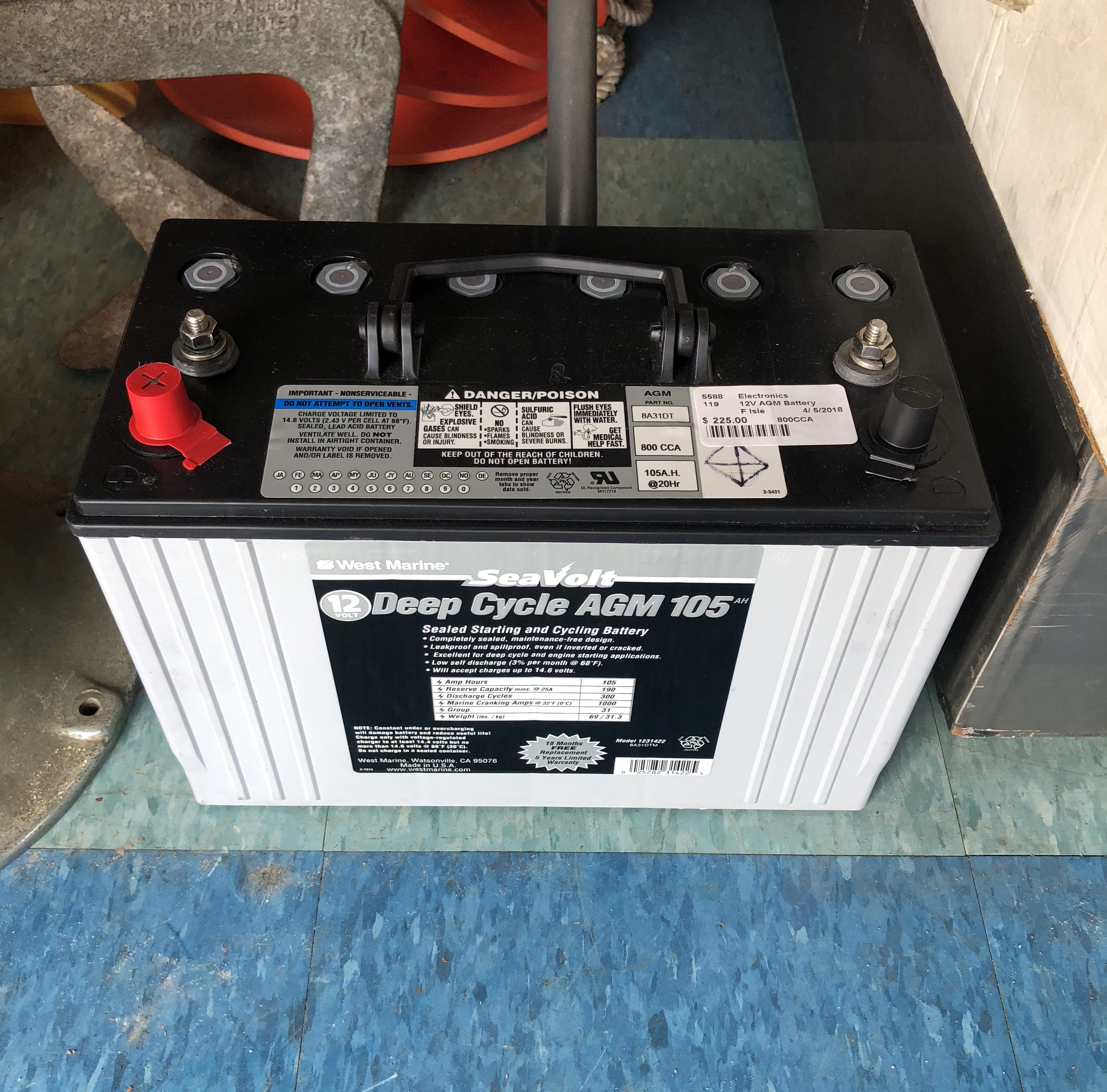

Unlike most automotive-grade flooded lead acid batteries, AGM batteries will not drop a plate or disintegrate when subjected to pounding in rough seas or excessive hull vibration.

VRLA batteries’ low self-discharge rate is far superior to that of flooded lead-acid batteries, making lay-up time maintenance-free. After the first fathom of water, the point is probably moot. When faced with a flooded bilge situation, VRLA batteries will continue to operate submerged up to a 30-foot depth. If you plan to mount a gel battery on its side, expect to lose 10 percent of its amp-hour (Ah) capacity. Valve regulated lead acid (VRLA) batteries, because of their sealed spill-proof design, can be mounted in any position, except inverted. As boat manufacturers build larger house battery banks to keep up the load demands, they are faced with two choices: Build a battery bank out of traditional flooded cells, or embrace new technology and opt for a battery bank that is as progressive as their boat design.ĭeka SeaMate/Deka Dominator | Energy 1 Marine Battery | Lifeline AGM | Mastervolt AGM/Gel | Optima Spiral Cell | Trojan AGM | SeaVolt SeaGel The Pros and Cons of Valve-regulated Lead Acid (VRLA) Batteries What all of these accessories have in common is an incredible appetite for DC power. Bow thrusters once reserved for only the largest mega-yachts are now routinely found on vessels under 40 feet, and DC power inverters are almost as common as windlasses. However, boat technology and boating habits are changing. Even though most flooded cell batteries require electrolyte maintenance, contain spillable corrosive acid, and vent explosive gasses when severely overcharged, they still provide an energy reserve that is tolerant of a wide range of recharging voltages and is universally available. This is primarily because of its low initial cost when compared to similarly sized AGM and gel batteries. The most widely installed battery on new, entry-level, production boats is still the flooded cell battery. We’ll focus here on deep-cycle AGM and gel batteries to find the best deep cycle marine battery. Lead acid batteries are further sub-grouped into three application-based categories: starting, deep-cycle, and dual-purpose. There are three basic types of storage batteries used in the marine industry that is constructed of lead and acid: flooded or wet-cell batteries, AGM (absorbed glass mat) batteries, and gel (gelled electrolyte) batteries. The term lead acid battery usually conjures up the image of a standard flooded cell battery commonly found in cars and 80 percent of all production boats.


 0 kommentar(er)
0 kommentar(er)
